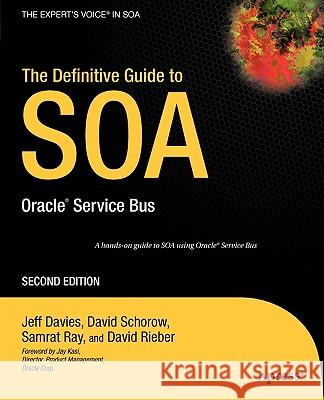The Definitive Guide to Soa: Oracle Service Bus » książka
The Definitive Guide to Soa: Oracle Service Bus
ISBN-13: 9781430210573 / Angielski / Miękka / 2008 / 536 str.
T he enterprise service bus (ESB) is a hot topic today. Many vendors are either building new products in this category or dressing up their existing products to pitch as ESBs. However, there is no clearly accepted definition of what an ESB is, what its architecture should be, or what its programming paradigm should be. Definitions range from saying that it is nothing and wholly unneeded to saying it is everything and has all the capabi- ties of a full integration suite with built-in orchestration, data aggregation, and web services management capabilities. Architectures range from being embedded in the clients and endpoints to being a central intermediary to being a decentralized intermediary. Progr- ming paradigms for the ESB range from writing Java to being completely configurati- driven and pliable with graphical interfaces. BEA Systems, the original creator of what is now the Oracle Service Bus, did not dress up one of its existing products and pitch it as an ESB. It built an ESB from scratch (first introduced in the summer of 2005), with a razor-sharp focus on where it is positioned as a component in an end-to-end service-oriented architecture (SOA). It complements a business process management or orchestration service, but serves a different and distinct role. Much of SOA is about componentization, interconnectivity, and reuse.











